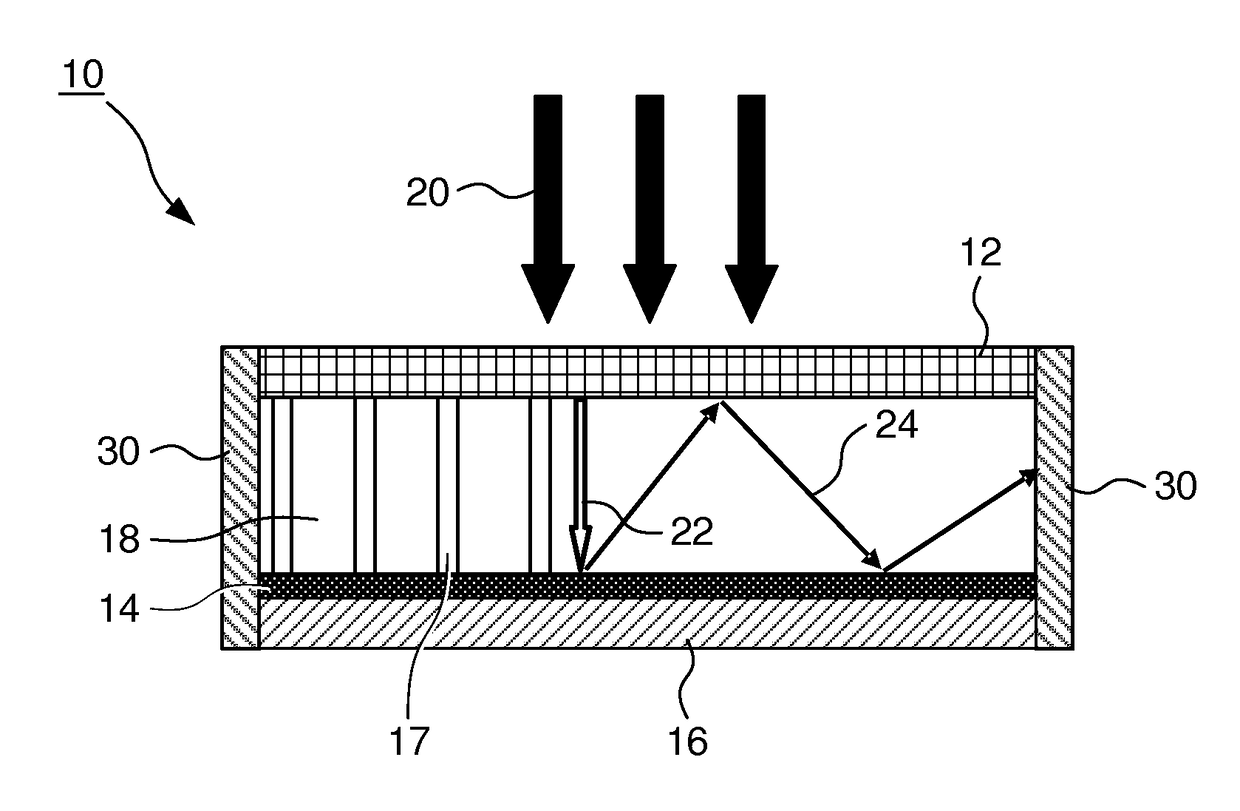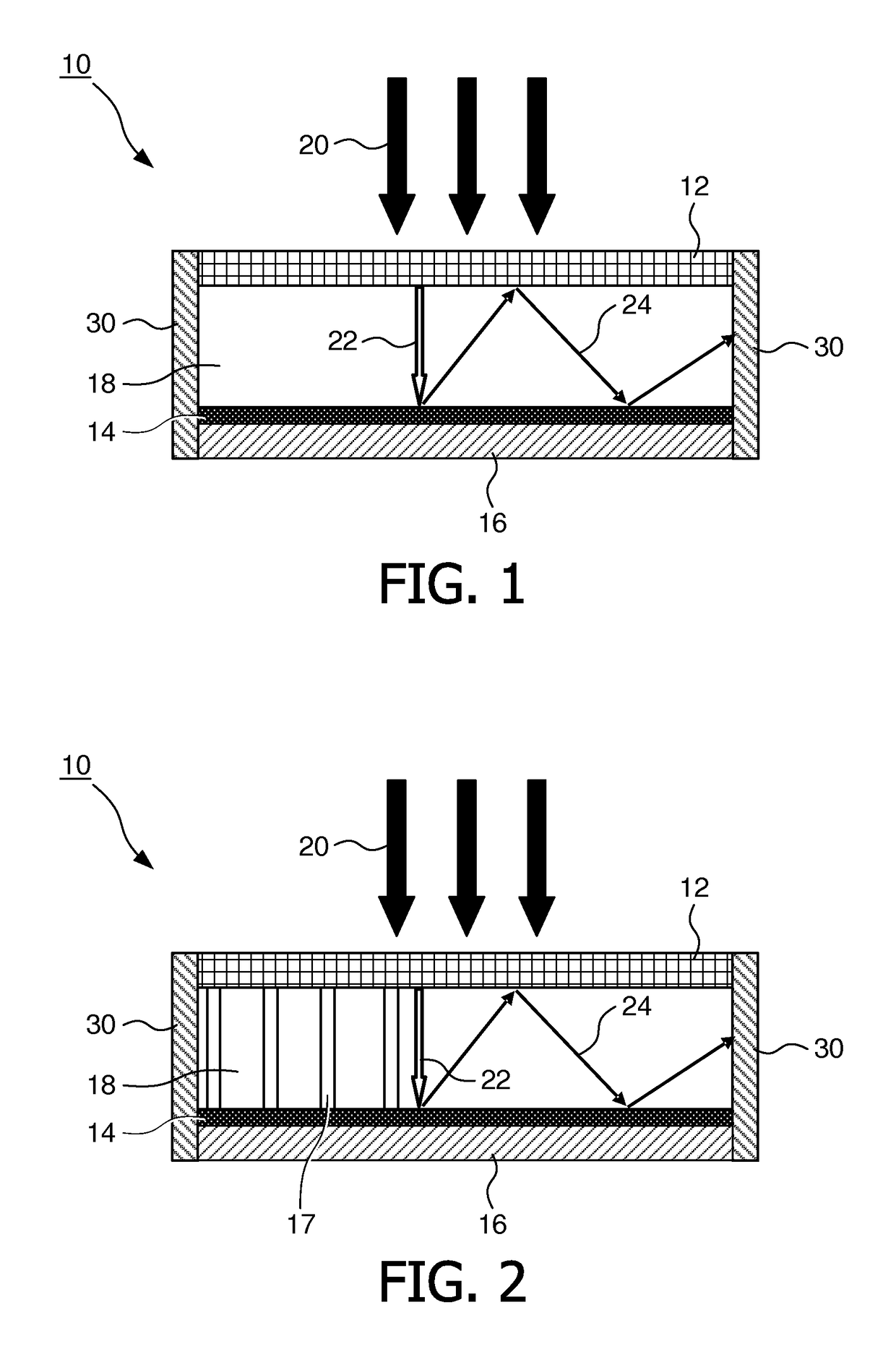Luminescent solar energy concentrator with a new architecture
a solar energy concentrator and solar energy technology, applied in the field ofluminescent concentrators, can solve the problems of poor efficiency of light coupling into the waveguide, high re-absorption of emitted light, and poor efficiency of the luminescent concentrator presently, and achieve the effect of reducing re-absorption losses
- Summary
- Abstract
- Description
- Claims
- Application Information
AI Technical Summary
Benefits of technology
Problems solved by technology
Method used
Image
Examples
Embodiment Construction
[0044]FIG. 1 schematically shows a configuration of an embodiment of a luminescent concentrator 10. The luminescent concentrator 10 comprises a wavelength-selective filter 12, a luminescent material 14 and an energy concentrating area 18, for example an air gap, therebetween. In the embodiment, the filter 12 is arranged at the top of the concentrator 10 so that incident solar light 20 can optimally reach the filter 12. A part of the incident solar light 22 passes through the filter 12 and the area 18 onto and / or into the luminescent material 14. This part 22 is absorbed by the luminescent material 14 and converted to converted light 24. For example, a large Stokes Shift between absorbed light 22 and emitted / converted light 24 may be provided so that the converted light 24 provides for a larger wavelength than the solar light 22. The converted light 24 is then concentrated in the area 18 between the filter 12 and the luminescent material 14. In particular, a reflective structure 16 m...
PUM
 Login to View More
Login to View More Abstract
Description
Claims
Application Information
 Login to View More
Login to View More - R&D
- Intellectual Property
- Life Sciences
- Materials
- Tech Scout
- Unparalleled Data Quality
- Higher Quality Content
- 60% Fewer Hallucinations
Browse by: Latest US Patents, China's latest patents, Technical Efficacy Thesaurus, Application Domain, Technology Topic, Popular Technical Reports.
© 2025 PatSnap. All rights reserved.Legal|Privacy policy|Modern Slavery Act Transparency Statement|Sitemap|About US| Contact US: help@patsnap.com


